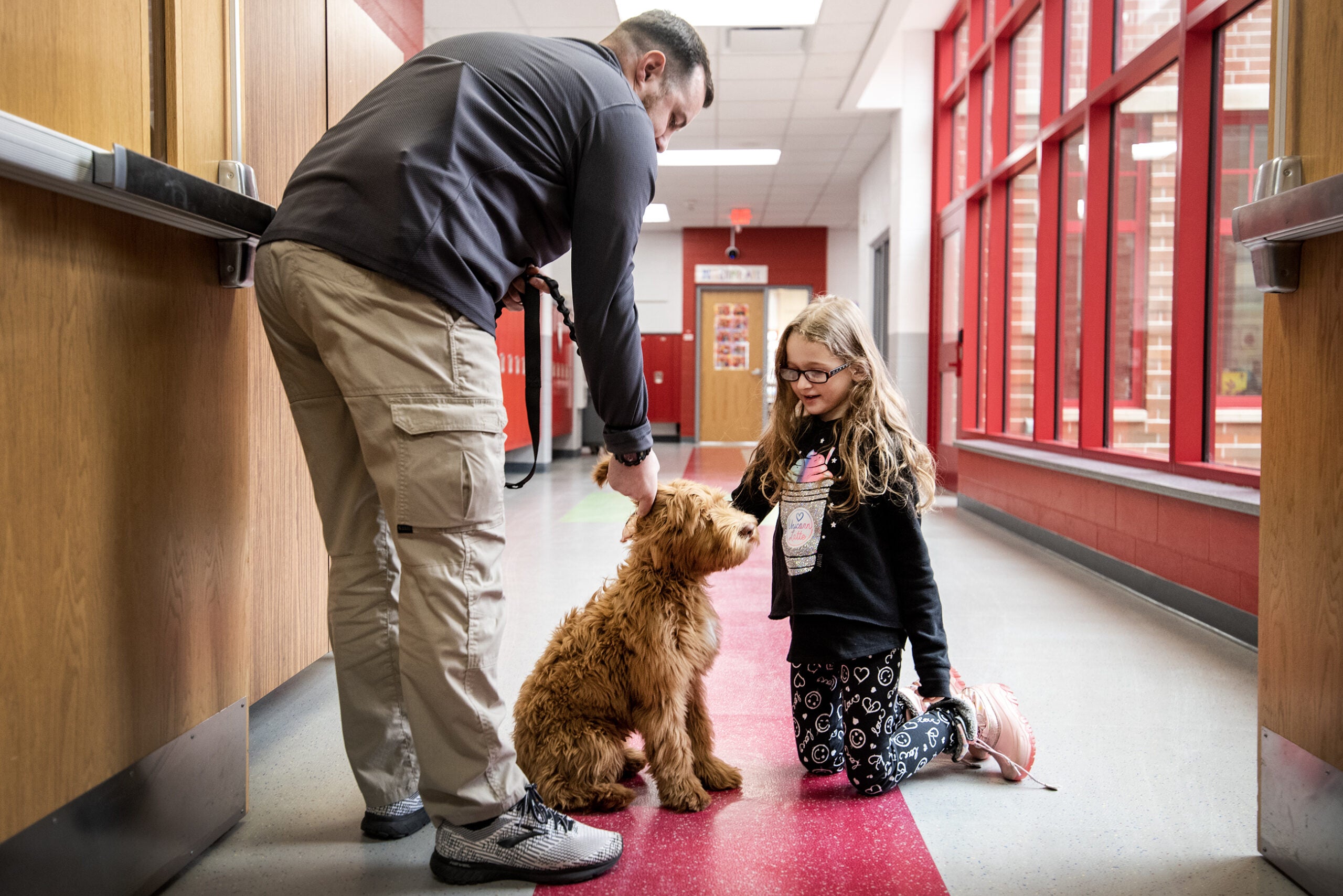Featured in this Show
-
Dogs, Cats Need Protection Against Winter Weather
Much of Wisconsin has been plunged in winter weather recently. As people break out more serious winter clothing to wear, it’s a good time to think about how to protect a pet from extreme weather as well.
While some canine companions really enjoy winter, no dogs are equipped for any and all winter conditions.
“There are some dogs that are just designed to be out in the cold weather, like the northern breeds — huskies, malamutes, and so on,” said Dr. Sandi Sawchuk, a professor at the University of Wisconsin-Madison School of Veterinary Medicine. “But, even those breeds need shelter and protection when it’s really, really cold outside.”
Sawchuk said that some dogs don’t mind clothing, while others will put up quite a fuss. She said that if one’s dog will wear a coat, “by all means, put one on him!”
Booties, on the other hand, are a tough sell for most dogs, Sawchuk said. Nevertheless, paws do need protection.
“Especially when you look at all the different chemicals and salts that may be out there during the winter,” Sawchuk said. “They can be quite irritating to the feet.”
Sawchuk said that there is one type of bootie that owners say dogs tolerate a little better than others: “They look like little balloons,” she said. “They’re a rubbery-type thing, and they’re quite inexpensive. They slip on over the feet instead of being laced up or fastened in some way.”
Owners also report good traction so they are less slippery, too.
If a dog just won’t wear booties, Sawchuk said that tending to their paws when they come back indoors is important. She recommended wiping the feet and belly to remove any chemicals or other irritants that they may have come into contact with. Not only can those materials cause topical problems, but a dog might lick that part of their body and ingest them.
An additional problem for dogs whose paws are quite furry and enjoy playing in the snow are the “snow balls” that can form between the toes. Sawchuk said that if the hair is fairly long, there are mini-clippers designed to get between the toes to cut away the accumulated ice and snow. A specialized tool is a good idea, she said, because the risk with using scissors is a cut to the skin. To lessen the likelihood of those deposits, a periodic professional trim of the fur on the paws is also an option.
Unsupervised time outdoors might be OK in warmer weather, but it’s not a good idea in the winter. Sawchuk said that it’s important to keep an eye open for possible injury from the cold while a pet is outside. Warning signs include if the dog’s flesh is cold to the touch in an area, especially the extremities, or if it is paler than usual.
“That’s definitely the time to bring them in and very gradually warming them up while you’re on the phone to the emergency (veterinary) clinic to get them in, because they may need some assistance,” Sawchuk said. Warming the affected areas too quickly, like plunging it into warm water, can actually further damage the tissue, she said.
Sawchuk also shared a caution that might come in handy for hunters heading out next week. She said that even though some lakes up north might be starting to freeze, it’s important to keep dogs off of ice that may not be thick enough to support their weight yet. “We do see them run out onto the lake when they see some geese or ducks. They can take off and then fall through,” she said. “I’ve lost a couple of my patients that way.”
It can be difficult to balance the need for exercise with keeping a pet safe from the elements. Sawchuk said that being more creative about indoor activity can help: “Enrich their life when they’re inside with new toys and games,” she said.
Some communities also have “doggie gyms” with agility courses and other activities, she said. It’s an indoor variation of a trip to the dog park.
While most cats that are family pets stay indoors during the winter months, Sawchuk did offer a reminder about feral cats in cold weather. Often they seek shelter and relative warmth, she said, and sometimes that is in the wheel wells of cars or even under the hood if the engine is warm.
“Pound on the hood to keep a cat from going for a ride,” she said, “or worse, getting caught up in some of the mechanisms of the engine.”
For those who would like to help feral cats more actively in extreme weather, Sawchuk said that there are a variety of designs for shelters that can be put up where feral cats are known to frequent. Even if they are living outside, she said, “at least they would have a warm place to go.”
The Humane Society of the United States has information on helping feral cats survive the winter.
Episode Credits
- Larry Meiller Host
- Judith Siers-Poisson Producer
- Dr Sandra Sawchuk Guest
Wisconsin Public Radio, © Copyright 2024, Board of Regents of the University of Wisconsin System and Wisconsin Educational Communications Board.


